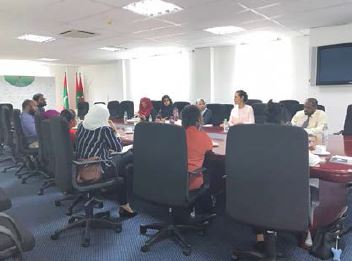The first meeting of the newly established national CRVS coordination mechanism was held 1 March in Male. The meeting brought together senior officials from the Ministry of Health, Department of National Registration, National Centre for Information Technology, and the National Bureau of Statistics and was chaired by the State Minister of Health. Challenges to improve the CRVS system were highlighted by the experiences with writing the first vital statistics report of the Maldives. The report writing was supported by the ESCAP project to strengthen national capacity in producing and disseminating vital statistics from civil registration in Asia and the Pacific. As a result of the meeting, a technical working group to review issues of data quality was established. This group will report back to the Committee. It was also agreed to increase the number of stakeholders invited for the next meeting and for the Committee to have frequent meetings. The meeting identified which agencies will be leading the review process of the CRVS system and be responsible for coordinating with other relevant agencies.

More News
Newsletter Nov. 2024The Cabinet Division of Bangladesh conducted a workshop on Medicolegal Death…
Are you working with CRVS and have some questions that you want to explore in more depth? The…
Under Japan’s family registration law, parents must submit a birth registration document and a…
Indonesia’s Vital Statistics Report 2019-2023, released in October, is the country's first vital…
Bloomberg Philanthropies Data for Health Initiative’s Global Grants Program (GGP) called for…
The UN Legal Identity Agenda (UNLIA) actively promotes and assists member states in the initial…
At the Identity Week Asia 2024, held in October 2024, Directorate General of Population and Civil…
An initiative by the Danish National Archives, in partnership with the Center for Clinical Research…
Our community newsletter puts a spotlight on people who have gone above and beyond in their efforts…
In 2020, a record-high 35.5 million international migrant children were living outside their home…











